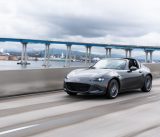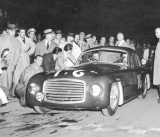Face it, you love fire trucks. As a kid, you probably had a few in your room, pretend-fighting fires that set your Lego city ablaze. But even has you may have grown from childhood play and wildly evolved, the fire truck is one of few automotive modern marvels that truly has changed very little since its creation. Officially known as a “fire engine” or “firefighting apparatus”, the fire truck originates in colonial times – well before the combustion engine or came to be. Its first recorded use is found in a patent filed by Richard Newsham.
An English Replacement for the “Bucket Brigade”
Newsham, an English inventor who died in 1743, is the fire-fighting apparatus’s official inventor. He submitted two patents to the Royal Patent Office of England in 1721 and 1725 (patent numbers 439 and 479) for a machine that used two single-acting pistons and an air vessel to draw water from a tank and project it at high pressure, effectively developing the first fire suppression system, ever. Newsham’s invention could hold around 170 gallons of water and it could pump that water at an impressive rate of 100 gallons per minute. His apparatus was a then-modernized solution for the crude concept of the Bucket Brigade: The idea that townsfolk must keep a bucket of water at their doorstep in case of a fire.

Richard Newsham painted his firefighting apparatus, invented in the 1720’s, bright red. This is how the modern fire truck likely got its distinctive color.
Though not technically a vehicle, the Newsham fire apparatus created the functionality that all modern fire trucks provide: a mobile fire suppression system using a pressurized storage tank and a hose. But this is only half the equation of the modern fire truck – what about self-propelled mobility, hydrants, and on-site water access?
From Tanks to Hydrants to Horses
The Newsham apparatus made its way to New York in 1731, though it wasn’t until 1822 that a suction apparatus would be invented, allowing firemen to pump water from a concentrated source instead of a self-contained tank. These man-powered machines would grow larger and larger, until horses became a necessity for carrying their weight. But horses were not always available, and they were often frightened by the sight and smell of open flames.

A horse-drawn fire engine is shown racing toward a blaze in 1913.
In 1829, Swedish-American inventor and steam engine inventor Johan Ericsson saw an opportunity to improve the Newsham fire apparatus’s mobility. Ericsson partnered with John Braithwaite, an English engineer, to develop the first motor-powered fire engine. It’s here we find that the iconic “fire engine” gets its name not from its purpose, but rather its original mode of automotive power:
How the Fire (Steam) Engine Got its Name
Ericsson’s first self-propelled vehicle used fire and steam as a source of energy for propulsion – effectively creating one of the first locomotives. In 1829, Braithwaite got the idea to mate Ericsson’s steam-fired engine with a Newsham fire-fighting apparatus. This is where we find the first true, fire-fighting automobile, real fire truck.

Inventor John Braithwaite combined Johan Ericsson’s steam engine (pictured) with a firefighting apparatus, creating the first self-propelled fire engine.
The Ericsson-Braithwaite fire engine was an exponentially more effective, mobile, and powerful apparatus than the original Newsham design. It could throw two tons of water per minute, could burn coke and coal, built pressure in just 20 minutes, and successfully saved the English Opera House and the Argyle Rooms from fiery destruction in 1830. The invention was so popular that engines ran in Berlin and Liverpool in the early 1830’s while Ericsson and Braithwaite continually improved the design.

Inventor Daniel Hayes created the first aerial ladder truck for firemen to scale buildings. Swivel ladders would eventually be installed atop the fire engine itself.
From Horses to Hooks and Ladders
Though hardly comparable to the modern fire truck, the Ericsson-Braithwaite fire engine provided the foundation upon which the Ahrens-Fox and Mack Truck companies would build the first modern firefighting automobiles. Steam would be replaced by combustion in 1911, and in the 1930s, the sky-reaching buildings of then-modern America would demand a means of ladder access for firefighters to battle flames.

A 1961 International Fire Truck, widely considered the first modern fire truck.
In 1931, inventor Daniel Hayes would develop the first aerial ladder truck (a vehicle separate from the fire engine), allowing firemen to reach up to 150 feet. It would not be until 1960 that the modern fire truck’s design would come to fruition, with the ladder mounted and capable of swiveling on a platform behind the fire engine’s cab. Truck builder International would create the gold standard of the modern vehicle with an engine equipped with water pumps, ladders, cherry pickers and enclosed seats. The rest is history.





